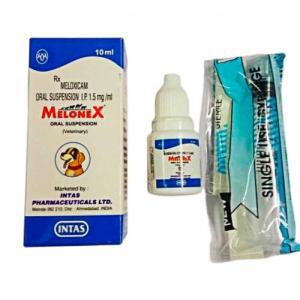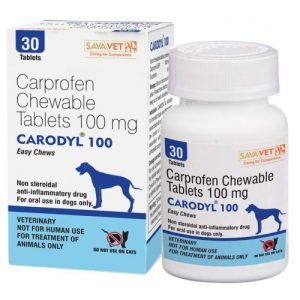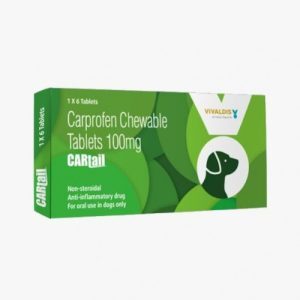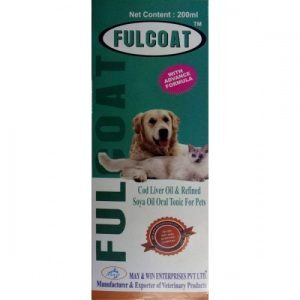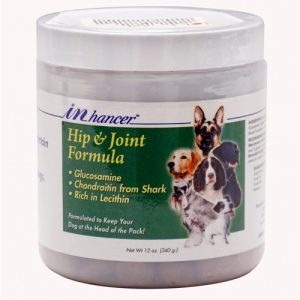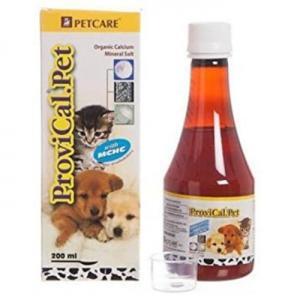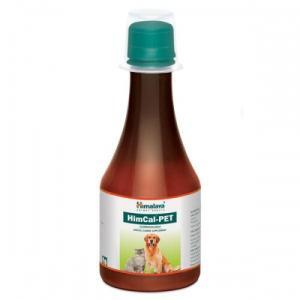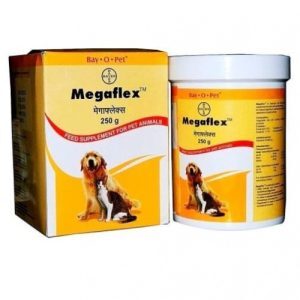Table of Contents
Treating osteoarthritis in dogs is important to alleviate pain, improve mobility, and maintain their quality of life. Untreated osteoarthritis can lead to increased pain, reduced movement, and potential joint damage. Effective treatment helps manage pain, maintain mobility, and prevent weight gain and secondary issues. It includes medications, weight management, physical therapy, joint supplements, dietary adjustments, and, in severe cases, surgery. Working with a veterinarian to create a personalized treatment plan is crucial for your dog’s well-being.

What Is Osteoarthritis in Dogs?
Osteoarthritis in dogs is a chronic and progressive joint disorder that primarily affects the cartilage—the smooth, protective tissue covering the bones’ ends within joints. Cartilage normally cushions and facilitates smooth movement of the joints. However, this cartilage gradually wears away in osteoarthritis, exposing the underlying bones. This leads to a series of changes and challenges:
- Cartilage Degeneration: The breakdown of cartilage disrupts the smooth surface that allows joints to move quickly. As a result, joint movement becomes less fluid, leading to pain and stiffness.
- Inflammation: The loss of cartilage triggers an inflammatory response within the joint. Inflammation causes further damage to the joint structures and contributes to pain and swelling.
- Bone Remodeling: As the cartilage wears away, the exposed bones can undergo changes. They might develop small bony outgrowths called osteophytes or bone spurs. These can limit joint movement and cause discomfort.
- Ligament and Muscle Impact: The altered joint mechanics due to cartilage loss can affect the surrounding ligaments and muscles. These structures might become strained or weakened as they try to compensate for the compromised joint.
- Pain and Discomfort: As cartilage diminishes and inflammation persists, dogs experience pain and discomfort. This can manifest as lameness, reluctance to move, difficulty getting up or lying down, and changes in gait.
- Reduced Mobility: Dogs with osteoarthritis often have reduced joint mobility and flexibility. They may exhibit stiffness, particularly after rest.
- Secondary Effects: Osteoarthritis-related pain can lead to behavioral changes, affecting a dog’s activity level and engagement in social interactions. Over time, muscle atrophy and reduced physical activity can further worsen the condition.
Osteoarthritis in dogs can be caused by various factors, including aging, genetic predisposition, previous joint injuries, obesity, and certain breeds’ anatomical characteristics. It most commonly affects weight-bearing joints like hips, knees, elbows, front legs, back legs, and the spine.
Who Is at Risk of Canine Osteoarthritis?
Several factors can contribute to the risk of canine osteoarthritis. While the condition can affect dogs of all breeds and sizes, certain factors increase the likelihood of its development:
- Age: Osteoarthritis is more common in older dogs. As dogs age, the wear and tear on their joints accumulate, increasing the risk of cartilage degeneration and joint issues.
- Breed Predisposition: Certain breeds are genetically predisposed to develop osteoarthritis. Large and giant breeds, such as Labrador Retrievers, German Shepherds, and Golden Retrievers, are more prone to joint issues due to their size and genetics.
- Body Weight: Overweight and obese dogs are at a higher risk of osteoarthritis. Excess weight puts additional strain on joints, accelerating the breakdown of cartilage and worsening joint health.
- Anatomical Factors: Dogs with certain anatomical features are more susceptible to joint problems. Breeds with short legs and long bodies (e.g., Dachshunds) or those with shallow hip sockets (e.g., Bulldogs) are prone to joint issues.
- Joint Injuries: Dogs that have experienced joint injuries or trauma, such as fractures or ligament tears, are at an increased risk of developing osteoarthritis in those affected joints.
- Genetics: Genetic factors play a role in joint health. If a dog’s parents or close relatives have had joint problems, it can increase the dog’s susceptibility to osteoarthritis.
- Activity Level: Dogs that engage in high-impact or repetitive activities, such as agility training or working dogs, may experience increased joint wear and tear, leading to a higher risk of osteoarthritis.
- Gender: Some studies suggest that female dogs might have a slightly higher risk of developing osteoarthritis than males.
- Congenital Conditions: Certain congenital conditions, such as hip or elbow dysplasia, can lead to abnormal joint development and increase the likelihood of osteoarthritis.
- Other Medical Conditions: Dogs with cruciate ligament disease or autoimmune disorders are more susceptible to joint inflammation and subsequent osteoarthritis.
Understanding these risk factors can help veterinarians and dog owners take proactive steps to manage and prevent the development of osteoarthritis. Regular exercise, weight management, early intervention in case of joint injuries, and breed-specific considerations are essential for maintaining joint health and reducing the risk of osteoarthritis in dogs.
Symptoms of Canine Osteoarthritis
What are the symptoms of arthritis in dogs?
The symptoms of canine osteoarthritis can vary in intensity and presentation, but they generally revolve around joint discomfort and mobility issues. If you suspect your dog might have osteoarthritis, look out for the following signs:
- Dogs with osteoarthritis may limp or favor one limb over others, especially after periods of rest or activity.
- Your dog might appear stiff, particularly when getting up after lying down for a while. They may have difficulty climbing stairs or jumping onto furniture.
- Dogs with osteoarthritis might be less willing to engage in physical activities they used to enjoy. They may seem lethargic or avoid exercise altogether.
- Osteoarthritis can alter a dog’s gait. You might notice uneven or stiff movement, especially in the affected joints.
- Inflammation due to osteoarthritis can cause joint swelling. The affected joint might feel warm to the touch and appear puffy.
- Your dog may show pain when touched or handled around the affected joints. They might yelp, flinch, or display other signs of discomfort.
- Dogs in pain might exhibit changes in behavior, such as increased irritability, restlessness, or withdrawal from social interactions.
- Over time, muscle wasting (atrophy) might occur around the affected joint due to decreased activity and disuse.
- Dogs might lick or chew at the painful joint area to alleviate discomfort, leading to localized hair loss or skin irritation.
- Severe pain or discomfort can sometimes lead to a reduced appetite in dogs.
- Dogs with osteoarthritis might adopt altered postures to relieve joint pain. For example, they might shift their weight or sit in a way that minimizes pressure on affected joints.
- Due to joint stiffness and pain, dogs may have trouble getting up from a lying or seated position.
These symptoms can be indicative of various other health conditions as well. If you observe any of these signs in your dog, especially if they are persistent or worsening, it’s recommended to consult a veterinarian for a proper diagnosis and treatment plan. The vet will tell you how to get rid of arthritis in dogs. Early intervention and proper management can help improve your dog’s comfort and quality of life.

Causes of OA
Osteoarthritis (OA) in dogs typically arises from a combination of genetic predisposition, age-related changes, and various environmental factors. What are the causes of arthritis in dogs? Here are some of the leading causes and contributing factors to the development of OA in dogs.
Aging
As dogs get older, the wear and tear on their joints over time can lead to the gradual breakdown of cartilage, a hallmark of osteoarthritis. Age-related changes in joint structures and function contribute to the condition.
Genetics
Certain dog breeds are genetically predisposed to developing joint issues and osteoarthritis. Breeds with conformational traits that affect joint stability, such as large breeds or those with specific body shapes, may be more susceptible.
Joint Abnormalities
Congenital or developmental conditions like hip dysplasia, elbow dysplasia, or luxating patella can cause improper joint alignment, leading to increased joint stress and cartilage deterioration.
Joint Injuries
Trauma, repetitive stress, or previous joint injuries can damage cartilage and lead to inflammation, increasing the risk of osteoarthritis development.
Obesity
Excess body weight places additional strain on joints, accelerating the breakdown of cartilage and promoting inflammation. Obesity is a significant risk factor for OA in dogs.
Nutrition
Improper or inadequate nutrition during a dog’s growth phase can impact the development of healthy joint structures, potentially increasing the risk of osteoarthritis later in life.
Inactivity and Overactivity
Both insufficient exercise and overexertion can contribute to OA development. Lack of exercise can weaken muscles and poor joint support, while excessive activity can cause joint wear and tear.
Inflammatory Conditions
Systemic or local inflammatory conditions, such as autoimmune diseases or chronic infections, can promote joint inflammation and contribute to the development of OA.
Hormonal Factors
What causes early arthritis in dogs?
Hormones, such as estrogen, might play a role in joint health. Spaying or neutering at an early age could impact joint development and increase the risk of OA.
Lifestyle Factors
Environmental factors, such as living conditions, exercise routines, and dietary habits, can influence joint health and contribute to OA development.
Biomechanical Stress
Abnormal joint mechanics due to conformational issues or improper gait can lead to uneven wear and tear on cartilage, increasing the likelihood of OA.
Degenerative Changes
Over time, the natural degeneration of joint tissues and the gradual loss of the ability to repair and maintain joint structures contribute to OA.
It’s essential to recognize that these causes often interact with one another, and the development of osteoarthritis is a multifactorial process. Identifying and addressing these contributing factors through proper care, management, and preventive measures can help reduce the risk and severity of OA in dogs.
Diagnosis
How do you test for arthritis in dogs?
Diagnosing osteoarthritis (OA) in dogs involves a combination of clinical evaluation, imaging techniques, and sometimes laboratory tests. A veterinarian will typically follow a systematic approach to determine if a dog has OA and assess the severity of the condition.
The veterinarian will perform a thorough physical examination, observing the dog’s gait, movement, and overall body condition. They will palpate the joints to identify pain, swelling, or discomfort areas.
The vet will ask about the dog’s medical history, including any previous injuries, surgeries, or known joint issues. The vet will inquire about any changes in the dog’s behavior, such as reluctance to move, difficulty getting up, or signs of pain.
You may be offered an X-ray procedure. It provides detailed images of the bones and joints. It can reveal changes in joint space, bone remodeling, and the presence of osteophytes (bone spurs)—all indicative of OA. X-rays can help assess the extent of joint damage.
In some cases, joint fluid might be collected through a needle (joint aspiration) and analyzed. The presence of inflammation and changes in the fluid can provide insights into the joint’s condition. In more complex cases, or if a surgical option is being considered, advanced imaging techniques such as MRI (magnetic resonance imaging) or CT (computed tomography) scans can offer detailed views of the joints and surrounding structures.
Blood tests are not typically used to diagnose OA, but they might be performed to rule out other potential causes of joint pain or inflammation.
Is there medication for arthritis in dogs? If the vet suspects OA, they might recommend a trial of pain medication or other treatments. Improvement in the dog’s symptoms after treatment can help confirm the diagnosis.
Diagnosing OA can be challenging, as the symptoms can overlap with other conditions. Additionally, some dogs might have OA without showing obvious signs. Early diagnosis is beneficial for managing the condition and improving the dog’s quality of life. If you suspect your dog has OA or if they exhibit signs of joint pain, stiffness, or lameness, it’s best to consult a veterinarian. The vet will use their expertise and diagnostic tools to accurately identify the presence and severity of OA and develop an appropriate treatment plan.
Treatment of Osteoarthritis in Dogs
There are several treatment approaches. What is the best way to treat arthritis in dogs? These approaches can be combined to create a comprehensive treatment plan tailored to your dog’s needs.
Proper Nutrition
Providing a balanced and appropriate diet is crucial for supporting joint health. Some dog foods are formulated with ingredients that support joint function, such as omega-3 fatty acids and antioxidants. Consult your veterinarian for dietary recommendations tailored to your dog’s specific needs.
Weight Management
Maintaining a healthy weight is essential for dogs with OA. Excess weight places additional strain on the joints and exacerbates pain. Your veterinarian can help you determine your dog’s ideal weight and recommend a weight management plan that includes proper portion control and regular monitoring.
Regular Exercise
How to care for arthritis in dogs?
Controlled and appropriate exercise is essential for dogs with OA. Low-impact exercises like walking and swimming can help maintain joint mobility and muscle strength without causing excessive joint stress. Avoid high-impact activities that might worsen joint discomfort.
Physical Therapy
Under the guidance of a veterinarian or a certified animal rehabilitation therapist, physical therapy exercises can improve joint mobility, muscle strength, and flexibility.
Lifestyle Modifications
How to control arthritis pain in dogs?
Adjust your dog’s living environment to make it more accessible and comfortable. Provide soft bedding, ramps, or stairs to help them navigate areas without excessive jumping or climbing.
Cold and Heat Therapy
Applying cold packs or warm compresses can help alleviate pain and inflammation. Consult your veterinarian for guidance on when and how to use these therapies.
Surgery
In severe cases of OA or when joint damage is extensive, surgical options like joint replacement or joint fusion might be considered. These options are typically explored when other treatments have not provided sufficient relief.
Medications
How do you relieve arthritis pain in dogs?
- Nonsteroidal Anti-Inflammatory Drugs (NSAIDs) help reduce pain and inflammation. They are commonly prescribed for dogs with OA. However, due to potential side effects, NSAIDs should only be used under veterinary supervision. Or ask about arthritis pain relief in dogs over the counter.
- Joint Supplements: Glucosamine and chondroitin sulfate are commonly used supplements to support joint health. These substances help maintain the integrity of cartilage and may provide relief from joint discomfort.
- Pain Relief Medications: Other pain relief medications, such as tramadol for arthritis in dogs or gabapentin, might be prescribed for dogs that cannot tolerate NSAIDs or require additional pain management.
Melonex Oral (Meloxicam), 10 ml
Melonex Oral is a veterinary medication that contains the active ingredient Meloxicam. It is commonly used to relieve pain and manage inflammation in dogs and cats. Meloxicam is a nonsteroidal anti-inflammatory drug (NSAID) that helps alleviate pain associated with osteoarthritis, post-operative pain, and other animal inflammatory disorders.
Active Ingredient
Meloxicam: Meloxicam is an NSAID that reduces the production of prostaglandins, chemicals responsible for promoting pain and inflammation in the body.
How to Use
Melonex Oral is typically administered orally, either mixed with food or directly into the mouth using the provided dropper. The usual starting dose for dogs and cats is 0.1 mg/kg body weight on the first day, followed by 0.05 mg/kg body weight once daily after that.
Benefits
- Pain Relief: Melonex Oral helps relieve pain associated with various conditions, improving the animal’s comfort and quality of life.
- Inflammation Management: It helps manage inflammation caused by arthritis, injuries, or surgical procedures.
- Enhanced Mobility: Melonex Oral can improve mobility and encourage more normal movement by reducing pain and inflammation.
Differences from Others
- Melonex Oral is a Meloxicam brand, a commonly prescribed NSAID for animals. It shares its active ingredient with several other veterinary medications.
- Differences between various brands include concentration, formulation (liquid, tablet, injection for arthritis in dogs), and dosing recommendations.
- Consult a veterinarian to determine which specific medication and dosage regimen suits your pet’s needs.
Carodyl (Carprofen), 25mg, 75mg, 100mg
Carodyl is a veterinary medication that contains the active ingredient Carprofen. It is a nonsteroidal anti-inflammatory drug (NSAID) commonly used to manage pain and inflammation in dogs. Carprofen effectively alleviates discomfort associated with osteoarthritis, post-operative pain, and other inflammatory disorders.
Active Ingredient
Carprofen: Carprofen is an NSAID that inhibits the production of prostaglandins, chemicals responsible for promoting pain and inflammation.
How to Use
Carodyl is typically administered orally as tablets and can be given with or without food. The typical starting dose for dogs is 2 mg/lb (4.4 mg/kg) body weight, given as a single daily dose or divided into two doses.
Benefits
- Pain Relief: Carodyl relieves dogs suffering from arthritis, joint pain, and post-surgery discomfort.
- Inflammation Management: It helps manage inflammation associated with various conditions, improving comfort and mobility.
- Improved Quality of Life: Carodyl enhances the overall quality of life for dogs with chronic or acute pain by reducing pain and inflammation.
Differences from Others
- Carodyl is a Carprofen brand, one of the more commonly prescribed NSAIDs for dogs.
- Differences among brands include concentration, tablet strength, and dosing recommendations.
- Consult a veterinarian to determine the most appropriate medication and dosage for your dog’s needs.
Cartail (Carprofen), 50mg, 100mg
Cartail is a veterinary medication containing the active ingredient Carprofen. It belongs to the nonsteroidal anti-inflammatory drugs (NSAIDs) class and is commonly used to manage pain and inflammation in dogs. Cartail relieves discomfort associated with osteoarthritis, post-operative pain, and other inflammatory disorders.
Active Ingredient
Carprofen: Carprofen is an NSAID that inhibits prostaglandin production, promoting pain and inflammation.
Dosage and Frequency
Cartail is typically available in tablet form and is administered orally. It can be given with or without food, as directed by your veterinarian. The standard starting dose for dogs is typically 2 mg/lb (4.4 mg/kg) of body weight, administered once daily or divided into two doses.
Benefits
- Pain Relief: Cartail effectively alleviates pain and discomfort in dogs suffering from arthritis, joint pain, and post-operative recovery.
- Inflammation Management: It helps manage inflammation associated with various conditions, promoting greater comfort and mobility.
- Enhanced Well-Being: Cartail contributes to an improved quality of life for dogs with acute or chronic pain by reducing pain and inflammation.
Differences from Others
- Cartail is a Carprofen brand, a widely used NSAID for dogs.
- Differences among brands include tablet strength, formulation, and dosing recommendations.
- It’s recommended to consult with your veterinarian to determine the most suitable medication and dosage for your dog’s specific needs.
FulCoat (Cod Liver Oil, Soya Oil), 200ml
What essential oil is good for arthritis in dogs?
FulCoat oral tonic is a pet supplement that combines the active ingredients Cod Liver Oil and Soya Oil. It promotes healthy skin, coat, and overall well-being in dogs and cats. Cod Liver Oil and Soya Oil are rich sources of essential fatty acids and nutrients that contribute to skin and coat health.
Active Ingredients
- Cod Liver Oil: Does cod liver oil or fish oil help arthritis in dogs? Cod Liver Oil is a nutrient-rich oil derived from the livers of cod fish. It is an excellent source of omega-3 fatty acids, including EPA (eicosapentaenoic acid) and DHA (docosahexaenoic acid), which support skin health, reduce inflammation, and contribute to a glossy coat.
- Soya Oil: Soya Oil, derived from soybeans, is a source of omega-6 fatty acids, such as linoleic acid. Omega-6 fatty acids are essential for maintaining healthy skin and coat.
How to Use
FulCoat is typically administered orally and mixed with your pet’s food. Follow the manufacturer’s or veterinarian’s recommendations for the appropriate dosage and administration frequency.
Benefits
- Skin Health: The omega-3 and omega-6 fatty acids in FulCoat contribute to healthy skin by reducing dryness, itchiness, and inflammation.
- Coat Quality: These fatty acids also support a shiny, lustrous coat by nourishing hair follicles and promoting proper coat growth.
- Inflammatory Support: Omega-3 fatty acids have anti-inflammatory properties that can benefit pets with skin conditions or allergies.
- Overall Well-Being: A healthy skin and coat contribute to a pet’s overall comfort, appearance, and vitality.
Differences from Others
- FulCoat’s unique combination of Cod Liver Oil and Soya Oil provides a balanced blend of omega-3 and omega-6 fatty acids, each with its own set of benefits.
- Differences between similar products include the ratio of omega-3 to omega-6 fatty acids, additional ingredients, and formulation.
Inhancer (Calcium, Phosphorus, Glucosamine, Shark Chondroitin, Lecithin), 340g
Inhancer is a pet supplement formulated to support joint health and mobility in dogs and cats. It contains a combination of active ingredients, including Calcium, Phosphorus, Glucosamine, Shark Chondroitin, and Lecithin. This blend of nutrients is designed to promote joint function and alleviate discomfort associated with conditions like osteoarthritis.
Active Ingredients
- Calcium and Phosphorus: These minerals are essential for bone health and contribute to the overall structural integrity of the skeletal system.
- Glucosamine: Glucosamine is a natural compound found in cartilage. It supports the maintenance and repair of cartilage, which cushions joints and promotes smoother movement.
- Shark Chondroitin: Chondroitin is another component of cartilage. It helps retain water in the cartilage, maintaining its elasticity and shock-absorbing properties.
- Lecithin: Lecithin is a fatty substance that can help emulsify fats and promote their absorption. It may contribute to the bioavailability of certain nutrients in the supplement.
How to Use to Treat OA
Inhancer is typically administered orally by mixing the appropriate amount with your pet’s food. Consult your veterinarian for specific dosage recommendations based on your pet’s size, condition, and needs.
Benefits
- Joint Support: Glucosamine and Shark Chondroitin combination supports joint health by promoting cartilage maintenance and reducing inflammation.
- Bone Health: Calcium and Phosphorus contribute to strong bones, which is essential for overall joint stability.
- Comfort and Mobility: Inhancer may help alleviate discomfort associated with osteoarthritis, enhancing your pet’s mobility by aiding in cartilage health.
- Nutrient Absorption: Lecithin may enhance the absorption of certain nutrients in the supplement, contributing to its effectiveness.
Differences from Others
- Inhancer’s unique blend of Calcium, Phosphorus, Glucosamine, Shark Chondroitin, and Lecithin offers a comprehensive approach to joint health support.
- Differences from other supplements include ingredient ratios, additional components, and formulation.
ProviCal (Calcium, Phosphorus, Vitamins D3, B12), 200ml
ProviCal is a pet supplement that supports bone health, calcium metabolism, and overall well-being in dogs and cats. It contains a combination of active ingredients, including Calcium, Phosphorus, Vitamin D3, and Vitamin B12. This blend of nutrients is designed to promote strong bones, aid in calcium absorption, and contribute to optimal overall health.
Active Ingredients
- Calcium and Phosphorus: These minerals are essential for bone health, providing the structural framework of bones and teeth. A proper balance between calcium and phosphorus is crucial for maintaining strong skeletal systems.
- Vitamin D3: Vitamin D3 plays a vital role in calcium absorption and bone metabolism. It helps the body utilize calcium effectively and supports bone health.
- Vitamin B12: Vitamin B12 is important for various bodily functions, including cell production, nervous system health, and metabolism.
How to Use to Treat OA
ProviCal is typically administered orally by mixing the appropriate amount with your pet’s food.
Follow the manufacturer’s guidelines or consult your veterinarian for the correct dosage and administration frequency.
Benefits
- Bone Health: The combination of Calcium and Phosphorus promotes strong bones and teeth, which are essential for overall health and well-being.
- Calcium Metabolism: Vitamin D3 helps the body absorb and utilize calcium efficiently, contributing to healthy bone structure.
- Overall Wellness: Vitamin B12 supports various bodily functions, including the nervous system, energy metabolism, and cell production.
Differences from Others
- ProviCal’s unique blend of Calcium, Phosphorus, Vitamin D3, and Vitamin B12 provides comprehensive support for bone health and overall well-being.
- Differences from other supplements include ingredient ratios, additional components, and formulation.
Himcal Pet Suspension (Phosphorus, Calcium), 200ml
Himcal Pet Suspension is a veterinary supplement designed to support bone health and mineral balance in dogs and cats. It contains a blend of active ingredients, including Phosphorus and Calcium. This combination of minerals is formulated to promote healthy bones, teeth, and overall well-being in pets.
Active Ingredients
- Calcium: Calcium is a vital mineral that contributes to bone and teeth formation, as well as nerve transmission, muscle function, and blood clotting.
- Phosphorus: Phosphorus is another essential mineral that works closely with calcium in bone formation and cellular processes.
How to Use to Treat OA
Himcal Pet Suspension supports bone health and overall well-being, which can positively affect joint function and comfort.
Always follow the manufacturer’s guidelines or consult your veterinarian for the correct dosage and administration frequency.
Benefits
- Bone Health: The combination of Calcium and Phosphorus promotes strong bones and teeth, essential for maintaining a healthy skeletal structure.
- Mineral Balance: Himcal helps ensure the proper balance of calcium and phosphorus, crucial for various bodily functions and overall health.
Differences from Others
- Himcal Pet Suspension’s unique formulation focuses on providing essential minerals, calcium, and phosphorus, in a balanced suspension.
- Differences from other supplements include ingredient ratios, additional components, and formulation.
Megaflex (Vegetable Oils), 100g, 250g
Megaflex is a pet supplement formulated with a blend of vegetable oils to support joint health and mobility in dogs and cats. While the specific active ingredients are not specified, vegetable oils are typically used as a source of essential fatty acids that can benefit joint function. Megaflex promotes comfort and ease of movement, particularly for pets with osteoarthritis.
Active Ingredients
The active ingredients in Megaflex are vegetable oils. These oils may include sources of omega-3 and omega-6 fatty acids, which can contribute to joint health and overall well-being.
How to Use to Treat OA
Megaflex is intended to support joint health, potentially easing discomfort associated with osteoarthritis (OA) and other joint issues.
Dosage and frequency will vary based on the size of your pet and the specific formulation of Megaflex.
Benefits
- Joint Support: The blend of vegetable oils in Megaflex may provide essential fatty acids that support joint health, reducing stiffness and promoting mobility.
- Overall Well-Being: Omega-3 and omega-6 fatty acids also contribute to your pet’s overall health, benefiting skin, coat, and potentially even the immune system.
Differences from Others
- Megaflex’s unique formulation of vegetable oils sets it apart from other supplements.
- Differences from other supplements include ingredient sources, ratios of fatty acids, additional components, and formulation.
How to Prevent Canine OA
Preventing canine osteoarthritis (OA) involves a combination of proactive measures to maintain joint health and minimize factors contributing to its development. Here are some things to do for preventing arthritis in dogs.
How to prevent arthritis in dogs?
Feed your dog a balanced diet and monitor their weight to ensure they stay within a healthy range. Excess weight places additional strain on joints and increases the risk of OA. Feed your dog a diet that supports joint health. Look for foods formulated with omega-3 fatty acids, antioxidants, and joint-supportive nutrients. Consult your veterinarian for guidance on portion control and appropriate nutrition.
Engage your dog in regular, moderate exercise to promote joint mobility and muscle strength. Low-impact activities like walking and swimming are ideal. Avoid high-impact activities that could stress joints, especially in growing puppies and senior dogs. Prevent excessive jumping, running, and activities that could strain your dog’s joints, particularly in puppies and senior dogs. Be cautious with repetitive motions and activities that could lead to joint stress. Choose toys and games that are gentle on your dog’s joints. Avoid activities that involve sudden stops, starts, and quick changes in direction that could cause injury.
Glucosamine and chondroitin supplements can be beneficial for maintaining joint health, especially in dogs predisposed to OA or already showing early signs of joint discomfort. Consult your vet for appropriate supplements and dosages.
Schedule routine check-ups with your veterinarian to monitor your dog’s overall health, including joint health. Early detection and intervention can help manage any issues before they worsen.
Provide soft and supportive bedding for your dog to rest on. Elevated beds can reduce pressure on joints when lying down and getting up. If you have a large or senior dog, consider using ramps or stairs to help them navigate elevated areas without straining their joints.
Minimize the risk of injuries that could contribute to OA. Use proper leashes and harnesses during walks, and avoid exposing your dog to slippery surfaces.
If you’re getting a purebred dog, research the breed’s susceptibility to joint issues and choose breeders who prioritize joint health and perform health screenings.
If your dog shows signs of joint discomfort or mobility changes, consult your veterinarian promptly. Early diagnosis and treatment can help manage OA and prevent its progression.
Combining these preventive measures and tailoring them to your dog’s individual needs can significantly reduce the risk of canine osteoarthritis and promote a healthy, active life.
FAQ
Does Gabapentin Help with Arthritis Pain in Dogs?
Gabapentin is sometimes prescribed for dogs to manage neuropathic pain, which can be associated with conditions like arthritis. It can help alleviate pain and discomfort, but its effectiveness can vary from dog to dog. Consult your veterinarian before using gabapentin or any other medication.
Does Heat Help Relieve Arthritis Pain in Dogs?
Applying heat to arthritic joints can help relax muscles, increase blood flow, and relieve pain and stiffness temporarily. However, consult your vet before using heat therapy, as excessive heat can worsen inflammation.
How Can I Tell if My Dog Is in Pain from Arthritis?
Watch for signs such as limping, stiffness, difficulty getting up, reluctance to move, changes in behavior, reduced activity, and visible discomfort when touched around joints.
What Food is Good for Arthritis in Dogs?
Foods rich in omega-3 fatty acids, antioxidants, and joint-supportive nutrients can benefit dogs with arthritis. Consult your vet for recommendations on suitable diets or supplements.
Does Glucosamine Help Arthritis in Dogs?
Glucosamine is often used to support joint health and manage arthritis in dogs. It can help maintain cartilage integrity and provide some relief. Consult your vet to determine if glucosamine is appropriate for your dog.
Does Walking Help Arthritis in Dogs?
Controlled and moderate exercise, such as walking, can help maintain joint mobility and muscle strength in dogs with arthritis. Consult your vet to design an exercise plan for your dog’s condition.
What Age Does Arthritis Start in Dogs?
Arthritis can develop in dogs at any age, but it is more commonly observed in older dogs due to the cumulative effects of joint wear and tear.
How Fast Can Arthritis Develop in Dogs?
The speed of arthritis development varies widely. It can develop gradually over the years or appear more rapidly due to genetics, injuries, or existing joint conditions.
Does Cold Weather Make Arthritis in Dogs Worse?
Cold weather can exacerbate arthritis symptoms in dogs by causing joint stiffness. Keep your dog warm and consider providing extra comfort during colder months.
How Bad Can Arthritis Get in Dogs?
Arthritis severity can range from mild discomfort to severe pain and mobility issues. Early intervention, proper management, and treatment can help control the progression and minimize its impact.
Does Laser Treatment Work for Arthritis in Dogs?
Low-level laser therapy sometimes alleviates pain and inflammation in arthritic joints. It may offer relief for some dogs, but its effectiveness varies.
Do X-Rays Show Arthritis in Dogs?
Yes, X-rays can reveal changes in joint space, bone remodeling, and osteophytes (bone spurs) that indicate the presence of arthritis in dogs. They are commonly used to diagnose and assess the severity of the condition.


